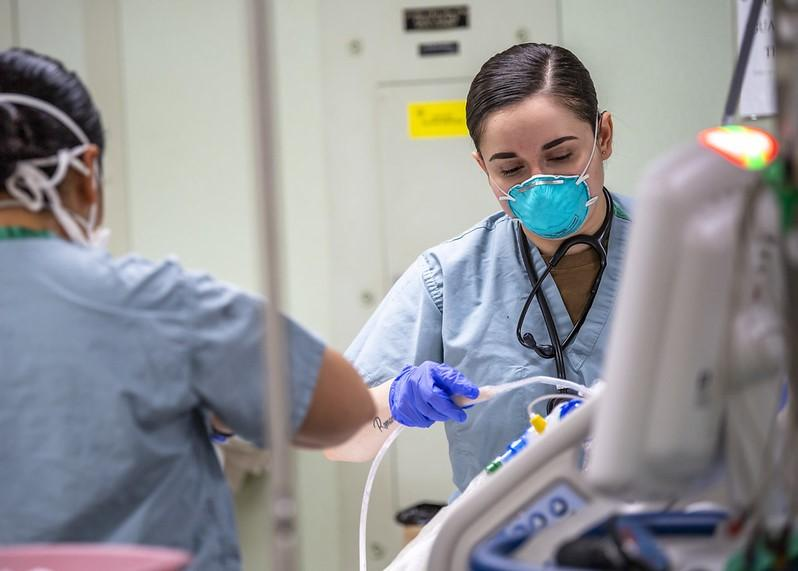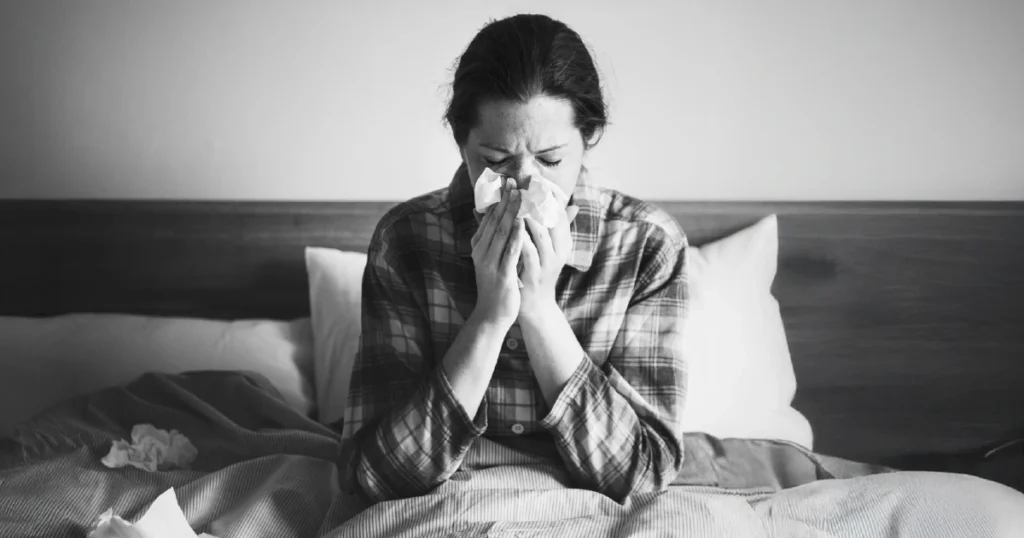_0.jpg)
Built-in mechanical ventilation and portable air cleaners (PACs), used by hospitals to help mitigate the spread of viruses, may actually spread viruses and other pathogens in some instances, according to new research from scientists at the University College London (UCL). The findings were recently published in Aerosol Science and Technology.
The authors of the study constructed an experiment tracking airborne particles around UCL hospital (UCLH) outpatient clinic during a number of simulated scenarios. The researchers used aerosol generators dispersing saline solution in certain rooms, with particle detectors in other rooms to track the movement of particles around the clinic, including the nursing stations, waiting rooms, and corridors.
Particle spread was uneven: In some scenarios, particles were reduced by ventilation and PACs by up to 96%. But the authors also noted that neighboring rooms had unexpectedly increased aerosol migration of 29% due to exhaust mechanics.
Closing consulting room (CR) doors put significant limitations on virus spread, but portable PACs at nursing stations and check-in desks had limited effect on reducing spread.
Air currents likely even more complex in older hospitals
“When all CR doors were opened, and the subsequent migration of aerosols in the presence of PACs and mechanical supply/extract ventilation was analyzed it revealed that the air currents in a volume can be complicated, and lead to potentially unexpected results,” the authors wrote.
Putting air cleaners in rooms led to unexpected increases in the circulation of aerosols in some cases.
“Putting air cleaners in rooms led to unexpected increases in the circulation of aerosols in some cases, but it took months to understand what we were seeing. Each scenario produced different, unexpected results, depending on the spaces and airflow sources involved,” said Laurence Lovat, PhD, a senior author of the study in a press release from UCL. “Even at UCLH, a modern hospital built less than 20 years ago, airflow patterns were not predictable. In older hospitals, which often have natural draughts, the situation would likely be even more complex.”
The authors said these dynamics must be further studied, especially because so many hospitals and clinics increased air ventilation systems after the COVID-19 pandemic.
The Trump administration for now will keep offering free COVID tests by mail as it considers whether to store or destroy the stockpile of 160 million tests, both of which come with significant financial costs, the Washington Post reported today.

Federal officials speaking off the record initially told the Post that the website for ordering the tests would go offline on February 18, but a Department of Health and Human Services spokesman later told the Post that the free test program would remain for now as the government discusses closing the current round of tests.
Tests to remain in the federal stockpile
The spokesman also said the tests would be kept in the stockpile until they reach their expiration date. Federal officials told the post that only a small fraction of the tests in the government stockpile are expired.
In late August, federal officials had announced a new round of free at-home tests by mail as a tool to reduce virus spread over the fall and winter respiratory virus season. The offer marked the seventh round of free COVID tests since 2021. At that time, the mail delivery program and year-round access of free tests in settings such as community clinics had delivered more than 1.8 million tests.
Data from general practitioners (GPs) in England over a 4-year period show 2% of antibiotic prescriptions were for respiratory syncytial virus (RSV) infections, mainly in young kids and older adults, despite the fact that antibiotics don’t target viruses, researchers reported today in the Journal of Antimicrobial Chemotherapy.
Using antibiotic prescribing data from the Clinical Practice Research Datalink (CPRD) and weekly counts of laboratory-confirmed respiratory infections, a team led by researchers at Imperial College London estimated weekly antibiotic prescriptions attributable to RSV by GPs from December 29, 2014, to December 30, 2018. CPRD represents roughly 23% of the English population and broadly reflects national demographics.
The researchers found that 2.1% of all antibiotic prescriptions and 4.3% of respiratory antibiotic prescriptions were attributable to RSV infection across all ages, amounting to an annual average of 639,908 antibiotic prescriptions per year. Infants aged 6 to 23 months had the highest rates of RSV-attributable prescriptions, with an annual average of 6,580 prescriptions per 100,000 individuals. Adults aged 75 and over had the highest annual volume of RSV-attributable prescriptions at 149,078.
Across all ages, penicillins accounted for the most RSV-attributable prescriptions, followed by macrolides and tetracyclines. Adults aged 65 and over were prescribed a wider range of antibiotic classes for RSV compared with younger age-groups, a finding the authors say may be related to the increased challenge of diagnosing RSV in that age-group.
Reducing RSV in older adults could cut antibiotic use
The study authors say that while it’s unclear what kind of impact reducing RSV-attributable antibiotic prescribing will have on antimicrobial resistance, interventions to reduce RSV infections—namely vaccines and monoclonal antibodies—could complement UK efforts to reduce antibiotic prescribing in primary care by 5% by 2029.
“The largest potential reductions are in older adults, an age group for whom antibiotic stewardship is challenging,” they wrote.

In the 2022-23 respiratory virus season, 379,300 people in the United State were hospitalized for influenza, with median cumulative state rates of 23.2 to 249.0 per 100,000 people, a Centers for Disease Control and Prevention (CDC)-led research team reports.
The aim of the study, recently published in the American Journal of Public Health, was to develop a way to use hospital-based surveillance to estimate hospitalizations for flu by state, age, and month and, ultimately, improve flu burden estimation.
The team analyzed Influenza Hospitalization Surveillance Network (FluSurv-NET) data to estimate monthly hospitalization rates and compared the results with those from other sources.
“Although the CDC has a long-established history of estimating the influenza disease burden at the national level, routine and robust methods to estimate state-level influenza-related hospitalization burdens have been lacking,” the researchers wrote.
States often report crude or unadjusted flu hospitalization data from FluSurv-NET or the National Healthcare Safety Network, which the authors said may underestimate the true disease burden owing to multiple underdetection factors, they added.
State rates varied widely
A total of 379,300 people were hospitalized for flu from October 2022 to April 2023, with a cumulative hospitalization rate of 114.5 per 100,000 people. Median cumulative state rates were 23.2 (Alaska) to 249.0 (New York) per 100,000 people.
Our results provide a complementary framework to calculate estimates at finer geographic scales.
The highest cumulative rate was seen among those aged 85 years or older (625.2 per 100,000 people), and the lowest was among those aged 18 to 49 (47.7 per 100,000).
Overall, the researchers’ model estimates captured state hospitalization time trends and slightly more cases than other sources of reported hospitalizations at the state level, probably owing to adjustments for testing probability and diagnostic sensitivity.
“Our estimates were comparable to national burden estimates incorporating other approaches while accounting for variations in the timing and geography of disease activity and changes in detection and reporting,” the researchers wrote. “Our results provide a complementary framework to calculate estimates at finer geographic scales.”













